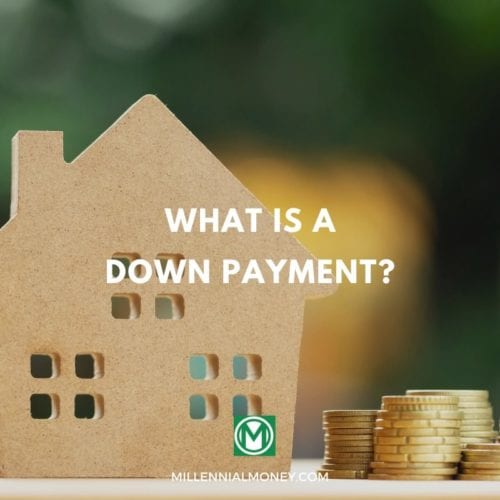The past few years have been great for the housing market. After bottoming out in 2011, the market (and economy) has really seen a surge especially in major cities like Washington D.C., San Francisco, Chicago, and Seattle.
That resurgence means that there has been a ton of first-time homeowners making down payments. Finally, many folks are able to afford a house, townhouse or condo they can call their own.
But simply owning a home isn’t necessarily the end of the process. Despite how great that three-bedroom colonial might be, monthly mortgage payments can be difficult to manage at times—especially when you consider things like changing jobs, having kids, and buying a car.
Fortunately, a strong housing market means that there are plenty of lenders and refinancing tools available to you. If you have increased home equity or improved your credit score dramatically in recent years, then you might be able to lower your monthly mortgage payment—or even shorten the life of your home loan.
This mortgage refinancing guide is designed to help you accurately assess your current situation and walk you through the process of refinancing your home.
Mortgage Refinancing
Taking out a mortgage to buy a home is typically the largest piece of debt you will take on in your lifetime. If you own a home, townhouse, or condominium, you understand what I mean.
Whether you are borrowing $100,000 for a small townhome or $600,000 for a killer townhouse in Seattle, taking out a mortgage is an important move. Otherwise, you wouldn’t be able to afford your dream house. Still, it’s a move that needs careful attention—from planning to execution to management.
Owning a home can offer a ton of benefits and can be an incredible investment in the long run, whether it’s your residence or a rental or investment property.
Unfortunately, life can throw lots of different things at you. Together, these variables can potentially make monthly mortgage payments difficult—if not impossible—to absorb each month. At a moment’s notice, high interest rates, an unstable economy, or an unexpected expense can all add difficulty to your ability to stomach your current mortgage payments.
Fortunately, homeowners like you may be able to lower monthly mortgage payments by using a tool called mortgage refinancing. Using this tool, you may be able to obtain more favorable interest rates and loan terms.
Is It A Good Idea To Refinance A Mortgage?
Getting a new mortgage to take over your original loan is called refinancing. This guide is aimed at walking you through the many things you need to consider if and when you decide to refinance your mortgage.
Before we dig any deeper, I want you to keep in mind that refinancing is a powerful financial tool that can be effective when used the right way. It has the ability to lower monthly payments and provide access to better loan terms for qualified homeowners.
That said, refinancing isn’t always the best solution for everyone. As with any big decision you make, the key is understanding all of your options, knowing which resources are available to you, and thinking critically before signing the dotted line.
With that being said, there are excellent mortgage refinancing options available in today’s market. To help you better understand your current situation, let’s cover some mortgage basics.
How Mortgage Refinancing Works
Simply put, mortgage refinancing is the process of swapping out an old loan for a new one.
Refinancing effectively pays off the original loan and replaces it with a loan that (hopefully) comes with better terms. As we’ve touched on already, the motivation for refinancing comes from wanting to pay less money each month and over the life of the loan—which is usually 15 or 30 years.
Who Is Eligible To Refinance A Mortgage?
But what really starts the process of even deciding to refinance a loan? I mean, I know that everyone wants the lowest possible interest rates. Everybody wants to pay as little as possible. So why wouldn’t everyone refinance…all the time?
For starters, only a few things make you eligible to receive a loan with lower interest. The main factor is probably the most obvious: your credit score. It’s not hard to imagine that after a few years of owning your home, crushing it at work, and paying off other outstanding debts, your credit shoots to the sky. And as that credit continues to improve, a bank or lender will start seeing you as an even better borrower than you were before. They may even reach out to you to suggest it’s time to refinance.
The Cost of Mortgage Refinancing
Another reason why people don’t refinance is because the process costs money.
If you plan on refinancing, get ready to absorb a number of fees—application fees, document preparation fees, appraisal changes, title search and insurance fees, flood certification fees, inspection charges, recording fees, origination fees, and more.
When Can I Refinance My Home?
Before you go out and try to refinance, know there may be timing restrictions that you’ll have to contend with as well. For example, each mortgage refinance lender has its own terms and conditions. Be sure to check with yours to see you need to wait 12 months or even longer before moving the process forward.
What Are the Benefits of Refinancing A Mortgage?
When done correctly, refinancing your mortgage can offer a surprising number of benefits, including:
- Lower monthly payments
- Reduced overall interest costs
- Access to cash for other expenses
- Reduced risk of the loan
- Consolidated debt for easier money management
Refinancing Provides Money for Other Expenses
In addition to obtaining a better interest rate by refinancing your home loan, refinancing can also give you access to cash for other purposes. For example, you might refinance your mortgage to free up some cash to pay off high-interest credit card debt or buy a new car.
Now, it’s not as though a lender is going to give you free cash to spend as you please. Instead, equity is taken out of your home. After your house is appraised, the lender will decide how much of that appraisal they want to loan out to you.
Once the original mortgage is paid off in full, the remaining balance of the refinancing loan is paid to you, the borrower. In addition to stacking some extra cash in your wallet, you may actually end up increasing the value of your home at the same time.
What Are the Risks of Refinancing Your Mortgage?
Refinancing your home is not without risks, unfortunately. While these risks aren’t necessarily a big concern, they are worth covering.
In some cases, using home equity credit to pay off your existing mortgage can actually cause you to incur penalties. Some mortgage agreements allow lenders to charge fees when taking this step. So, check on your current mortgage agreement and make sure that the overall refinancing costs are worth the potential financial gains from refinancing. It bears repeating: Read the fine print and make sure you understand it.
By now, you should have a better handle on all of the important considerations to make when refinancing your home—even if you’re just starting to think about whether it makes sense for you.
As you’d expect, there isn’t a one-size-fits-all solution to refinancing. Always take the time to do your homework, ask lots of questions, and be deliberate about the process.
Refinancing isn’t always the best answer for everyone. But in many cases, it is a powerful tool that can put you in better control of your home loan—and that much further down the path toward achieving long-term financial independence.
How to Refinance Your Mortgage
While everyone’s experience will be different during the refinancing process, here’s a quick step-by-step guide that will give you a general idea of what you should do to prepare.
1. Know Your Credit Score
Just like any problem you need to solve, knowing where you stand as a borrower gives you critical information to base your decision-making process on.
Is your credit much worse than it was when you originally bought your home? Then refinancing probably isn’t going to help right now.
But if it’s nearly perfect, then go for it! You might be able to save some serious dough. If you don’t know what your credit score is, check with your bank to see if it is a service they provide. If not, sign up for Credit Sesame, a free credit monitoring tool.
2. Know How Much Your House Is Worth
This falls in line with knowing your credit. Having all the facts is important, and the current value of your home is essential. You need to know whether your house has gone up or down in value since you bought it. A great tool for this is Zillow’s Zestimate.
3. Understand Your Goals
Know exactly what you hope to achieve in refinancing your mortgage. Being open with yourself and potential lenders will help keep your refinancing wishes on track.
4. Shop Around For The Best Mortgage Rate
When looking to refinance, there might be plenty of lenders willing to offer you a loan. But having a goal (e.g., an ideal interest rate) in mind will keep you from settling on the first refinancing rate put in front of you.
Just be wary of submitting refinancing applications constantly. All of those credit inquiries could cause your credit to take a hit, making it that much harder to refinance.
5. Understand The Costs Involved
An important part of the refinancing process is being aware of all potential costs. A lender willing to waive all of the up-front costs might just be deferring those costs and tacking them on to future payments.
In the meantime, remember that you might be responsible for application and origination fees, processing fees, appraisal fees, costs associated with title and insurance, underwriting costs, and more.
Depending on how the process plays out, there could potentially be attorney fees. Having one represent you throughout the process can give you peace of mind.
6. Lock-In That Rate
There’s no clear-cut approach here. But use your patience as a strength when waiting for a refinancing rate that suits your needs. Mortgage rates fluctuate daily. If you find a rate that looks appealing, you may not want to let it pass you by.
Mortgage Refinance Calculators Are Powerful Tools
Finding a great rate is easier said than done. For those of you who feel overwhelmed by the whole idea of refinancing, it’s so important to utilize every tool available to make the process easier.
One of those tools is a mortgage refinance calculator. Chances are you’ve seen one while browsing various finance websites.
In my opinion, mortgage refinance calculators make shopping for the best mortgage that much easier. Now, the calculators won’t do everything for you. It helps to know your new interest rate and loan amount, along with any potential fees you expect.
But once you have this basic data in place, the calculator will give you a bunch of great information—including new monthly payments, how much you’ll save, and more. More generally, refinance calculators will help give you a better handle on what the resulting terms of your refinanced loan might look like.
What You Should Know Before Refinancing
As we’ve already noted, refinancing is the only way you can get a better interest term and rate—and even convert your current mortgage from a variable loan rate to a fixed rate.
If you have good or excellent credit or have improved your financial health, then refinancing could be a great option. But what about folks with bad credit? What about those who have taken on more debt since taking out the initial loan?
In those instances, refinancing can be risky. Before jumping in with both feet, it’s important to assess your own finances and understand exactly what the lender is looking at when determining your eligibility to refinance. In some instances, refinancing can even lead to a higher interest rate instead of a lower one. Imagine that!
Every person’s financial circumstances are unique.
Have A Mortgage Refinance Strategy
As Mike Tyson once said, everyone has a plan before they get punched in the face. So, before jumping into the process, take your time to really think and consider why you are refinancing. In other words, what is your goal?
If you’re like most people, your goal is to lower your payments and save money over the life of your mortgage. But how you get there can be tricky depending on the decisions you make during the refinancing process.
For instance, refinancing your home over another 30-year loan can be attractive since it will result in substantially lower monthly payments—especially with a nicely negotiated new mortgage rate. But how does that compare to a shorter life of the loan—like 15 years?
As we covered before, extending the loan over 30 years might result in lower monthly payments. But, ultimately, you will be paying more in interest over the life of the loan as that principal balance takes another three decades to wipe away.
If you can get a low interest rate, consider refinancing your loan over a shorter period of time. In the grand scheme of things, it will help you pay less interest over the life of your loan. As always, it’s a fine balancing act finding that loan with an appropriate monthly payment and reducing your overall costs.
Change from an Adjustable-Rate to a Fixed-Rate Mortgage
Adjustable-rate mortgages are helpful in producing low monthly mortgage payments when you first own your home. As you’d expect, those interest rates can easily go up along with your monthly payments the longer you are paying off the loan.
If you want the stability of having the same payment month-in, month-out, then switching to a fixed-rate mortgage might make sense for you. A fixed-rate mortgage is particularly appealing when interest rates start climbing like rollercoasters.
Change from a Fixed-Rate to an Adjustable-Rate Mortgage
If you are doing well financially and find yourself in a position to pay off your mortgage sooner than you expected, then switching your fixed-rate mortgage to an adjustable-rate mortgage can be a powerful way to save thousands of dollars.
It can help get you to 100% equity in your home fast—provided those higher monthly payments don’t come as a shock.
Ideally, you can establish a good rapport and working relationship with the financier you’re working with. This will help you open and maintain a line of communication with your lender, giving you the opportunity you need to understand exactly what the lender is looking for when considering your refinancing application.
If you have pressing questions or need help understanding something, it’s always better to have an expert available to provide those answers. With so much at stake, you probably want to rely on more than a simple Google search.






Comments are closed.
Comments are closed here.